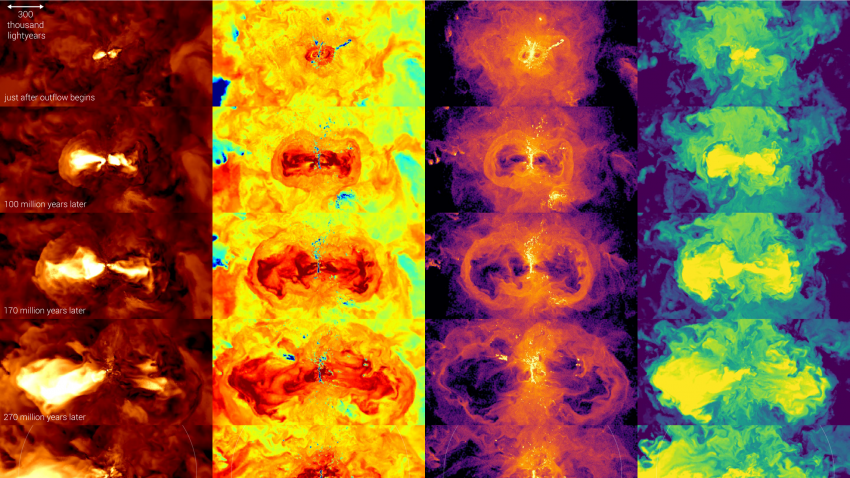Gas outflow around a galaxy from the TNG50 simulation
Evolution over a few hundreds of million years (from top to bottom) of the gas around a galaxy from the TNG50 simulation, with an active super massive black hole at its centre. The black hole at the centre of this galaxy is consuming gas from its surroundings and in doing so is generating copious amounts of energy. The release of this energy produces ultra-fast winds, which rapidly expand away from the galaxy and grow in size to become thousands of times larger than they started. These black hole driven outflows achieve velocities of tens of thousands of kilometres per second, have temperatures exceeding millions of degrees, and carry with them copious amounts of heavy elements such as oxygen, carbon, and iron. The four columns show, from left to right, the evolving velocity, temperature, density, and heavy element content around the galaxy. The galaxy itself is a cold (blue, second column), dense (yellow, third column) disc of star-forming gas visible as a small, vertical slab in the very centre of each image.
D. Nelson (MPA) and the IllustrisTNG team
Licence type


